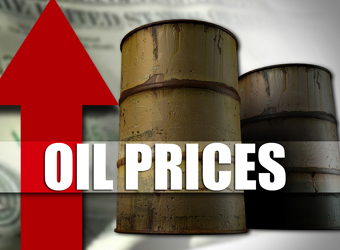Oil prices climbed on Monday more than 3 percent after Saudi Arabia and Russia agreed to extend production cuts into 2018.
The headline sent U.S. West Texas Intermediate crude as high as $49.66 a barrel, solidly above the $48.20 support level for the first time in two weeks. Oil prices sold off sharply after WTI breached that level on May 2, causing prices to fall through a series of key technical levels, culminating in a “flash crash” to $43.76.
By early afternoon, WTI prices had eased back, but held above $49 a barrel. International benchmark Brent stabilized above $52, after touching a three-week high.
John Kilduff, partner at energy hedge fund Again Capital, said he is now watching for WTI to break through $49.76 and $50.20, recent highs set in April. However, the rapid retracement of the last two weeks’ losses makes the gains vulnerable to traders looking to take profits from Monday’s rally, he added.
“For the bulls to regain the full upper hand, a close over $50 is what we need,” he said.
Monday’s gains were largely driven by short-covering, or winding down bets that oil prices will fall, according to Tamar Essner, senior director of energy and utilities at Nasdaq Corporate Solutions.
Last week, traders increased their short positions in oil futures and trimmed their bets that prices would rise, Essner noted. That made “the market poised for a reversal from the recent weakness on any bullish headline, which is what we’re seeing today,” she told CNBC in an email.
OPEC and a group of 11 oil-producing nations agreed to reduce their output by a combined 1.8 million barrels a day in the first six months of this year.
Crude futures had initially failed to rally last week on signs that OPEC and other oil exporters would keep the deal in place throughout 2017. But analysts said a strongly worded overnight statement from top producers Saudi Arabia and Russia calling for carrying over the accord through March 2018 was enough to spark a big gain.
“The market widely anticipated that cuts would be extended and yet it wasn’t giving that any credence as reflected in prices languishing sub-$50. The onus was on OPEC to up the ante which is what they did today with the surprise announcement,” Essner said.
That built on a two-day rally last week after the U.S. Department of Energy reported a larger-than-expected drop in the nation’s crude stockpiles and a recovery in gasoline demand, which has been soft in recent weeks.
The department’s Energy Information Administration will release its monthly forecast of U.S. shale oil production today. U.S. shale output has recovered strongly as oil prices held above $50 throughout much of this year.
Another forecast for rising supply from America’s shale fields is “exactly the type of thing that undercuts” supportive headlines from OPEC and Russia, Kilduff said.
Source: CNBC


